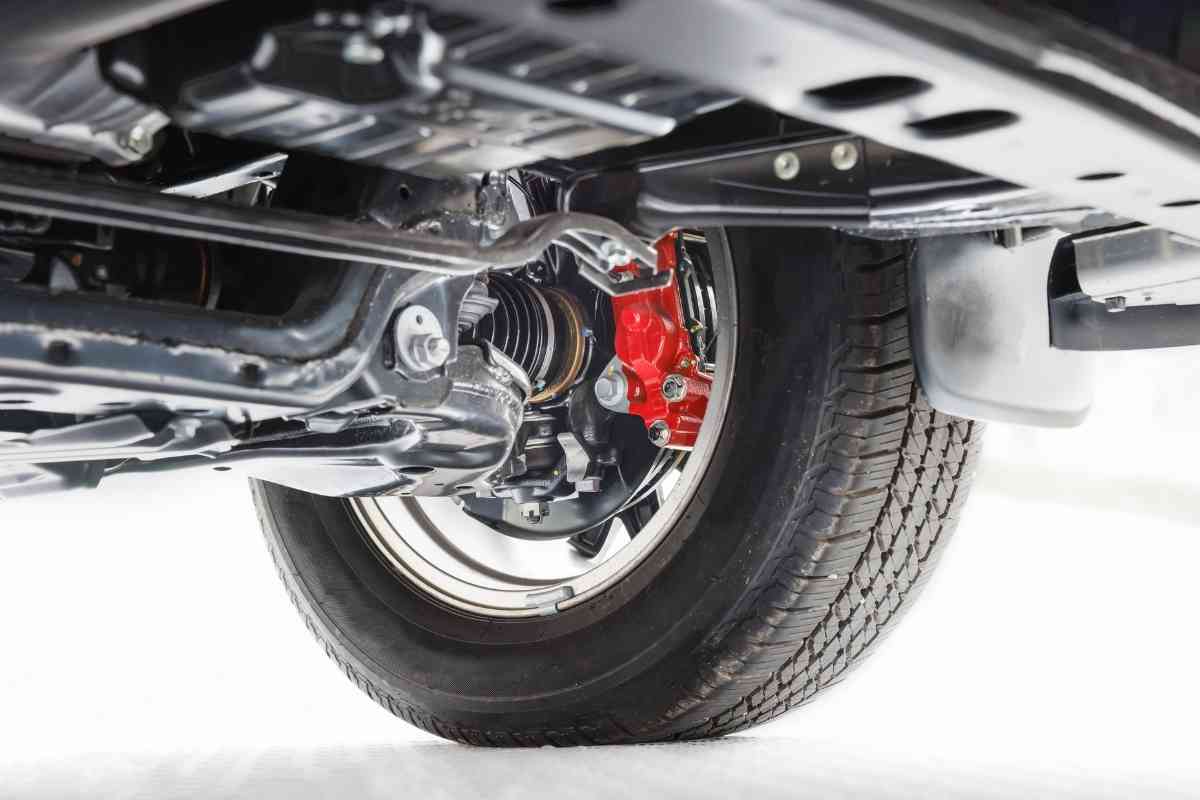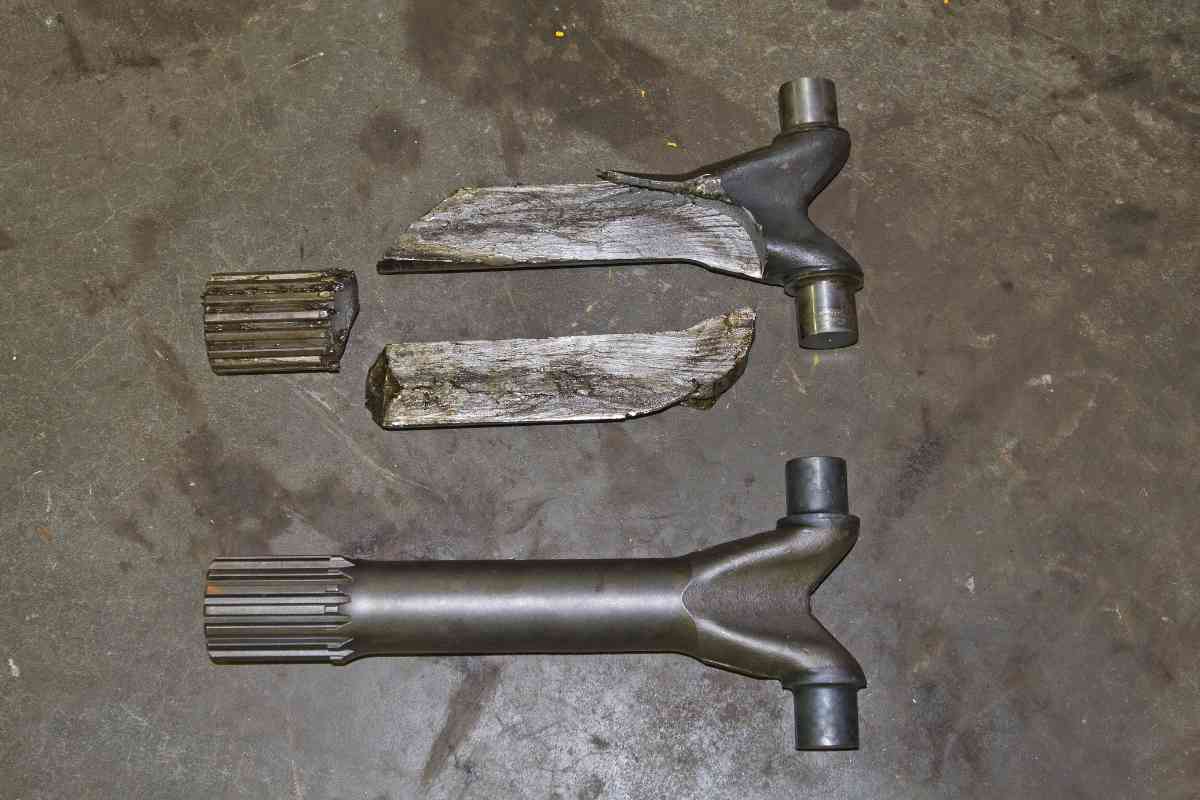4 Things That Happen When Your Drive Shaft Breaks While You’re Driving
No car can move and perform as expected without a functioning drive shaft, so many things would happen if it were to break while driving.

What happens if my drive shaft breaks when I’m driving?
When the drive shaft of a car breaks while driving, a loud clunking or grinding noise will occur, especially at higher speeds. Next, the vehicle will lose power steering and the ability to move or accelerate. This results in intense vehicle shaking, and serious damage can occur.
Driving without a drive shaft can be dangerous. Knowing what to do in case of a drive shaft break is essential and how to prevent this from happening is important.
We have dealt with the issue before and explain exactly what would happen and how to avoid it below.
4 Things That Happen When Your Drive Shaft Breaks On The Road
A drive shaft is a crucial component of any vehicle. The axle part transfers power from the transmission to the wheels.
The drive shaft connects to the transmission, which is located in the front of a car, and then runs under or through one or more pairs of wheels. The drive shaft can rotate in either direction, whether it is an open or closed loop system.
The function of a drive shaft is to transmit power from one point to another, usually from an engine to the wheels. So when the drive shaft breaks, there is a huge problem for drivers to deal with.
This causes a loud and distinct clunking or grinding noise, an immediate loss of power steering, intense vehicle shaking, and an inability to move the vehicle.
Loud Clunking And Grinding Noises
Right away, it’s likely for most drivers to hear a loud noise indicating the driveshaft broke, followed by a consistent grinding or clunking noise. This is most common and should be the first sign something is wrong.
This is because the u-joints are either loose, broken, or worn out excessively, so the loud clunking noise happens. We recommend trying to pull over right away when hearing this type of sound while driving.

Immediate Loss Of Power Steering
If a drive shaft breaks while driving, the driver will lose all power steering and vehicle control. This is because the power steering pump is located on the drive shaft. If it breaks, there is no way for the driver to control the car.
The car may start to swerve uncontrollably as it loses its ability to steer. It is important that drivers are aware of these risks to take appropriate action when facing such emergencies.
Intense Vehicle Shaking
The drive shaft connects the transmission and engine to the wheels. It transmits torque from one to the other. This is why a broken drive shaft will cause shaking in a car’s steering wheel and suspension system.
The intensity of the shaking will depend on the type of vehicle, how fast it was going before the shaft broke, and how much weight is in the car. Mild shaking also occurs as an indicator that something is wrong with the driveshaft before it breaks.
Inability To Move The Vehicle
Typically, moving the vehicle forward or backward is impossible when the entire drive shaft breaks. There is no power for the wheels to accelerate, so the vehicle cannot move.
It’s even possible the drive shaft parts can fall from under the car and hit the ground when driving. This is even more dangerous and will create sparks on the ground until the vehicle is stopped.
What Would Cause A Drive Shaft To Break While Driving?
The drive shaft is an integral part of the vehicle because it connects the transmission to the differential and other parts. If this part breaks, you will not be able to move your car.
There are a few reasons why it might break while driving. This includes excessive exposure to rugged driving conditions, torsional overload, and improper installation.
Excessive Rugged Driving Conditions
Excessive driving in rugged conditions can lead to a broken drive shaft. This is because the drive shaft is not designed for heavy loads, regular potholes, bumps, or more.
The same is true for larger trucks that might drive in off-road conditions. Without bigger wheels, exposing a vehicle to bad roads is one of the fastest ways to wear out the drive shaft.
Torsional Overload
Too much torque applied to the driveshaft consistently can cause added pressure on the u-joints. When this happens, they can come loose or break.
Once the u-joints break, everything can go wrong with the drive shaft. We recommend never pushing a vehicle past the recommended speed, towing capacity, and torque.
Improper Installation
Improper installation is another possibility and happens more than most people would think. This also applies to irregular vehicle servicing, which is needed to spot any issues with parts like this.
Regular checks on the u-joints to ensure they are secure and tight. Mounting the driveshaft too low or incorrectly also causes them to break much faster.
How Long Can You Drive With A Bad Drive Shaft?
The drive shaft is a critical component of the car’s suspension system. It connects the engine to the wheels and transmits power to them. The drive shaft also helps to keep the wheels in alignment.
A bad drive shaft can cause various issues with your vehicle, including uneven tire wear, difficult steering, excessive vibration, and more. Because of all these risks, we don’t recommend driving on one for long.
A driveshaft should last for at least 75,000 miles, and we recommend getting it fixed by a mechanic immediately when it fails. In most cases, driving with a broken one is impossible because the vehicle cannot steer or accelerate.
Key Takeaways
- If the drive shaft breaks while driving, expect a loud clunking or grinding noise followed by a loss of power steering and acceleration. The vehicle will also shake intensely.
- Drivers cannot drive for long with a bad drive shaft; once it breaks completely, there is no way to continue driving the car without losing control and a repair will be necessary.
- Three common reasons the drive shaft might break include excessive exposure to rugged driving conditions, improper installation, and torsional overload.
